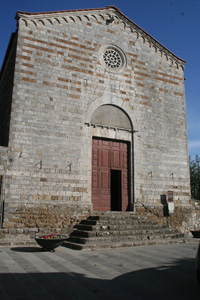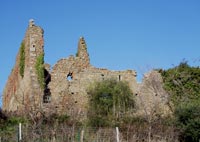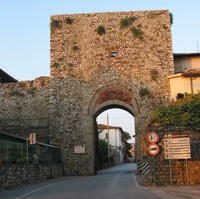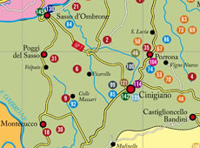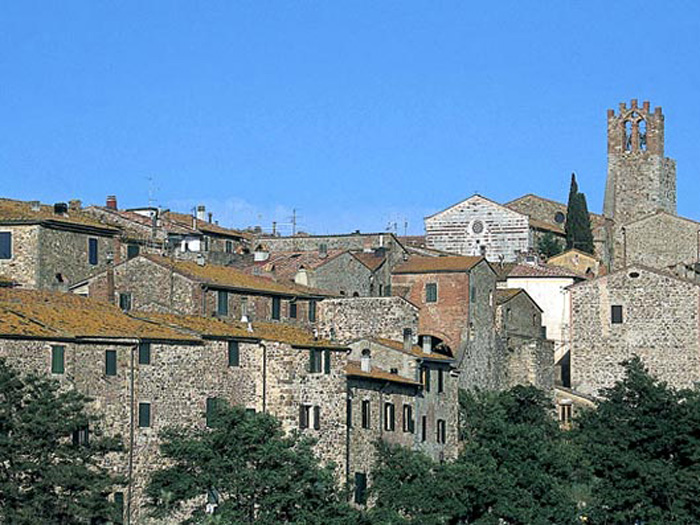 |
|
Campagnatico |
|
|
Campagnatico is a fascinating town in the Maremma, located in the south of Valle del’Ombrone and only 32 kilometres from Casa Santa Pia. The town of Campagnatico boasts great importance and secular relevance and was even mentioned in Dante’s fable The Divine Comedy, in the 11th canto of Purgatorio (Purgatory), which refers to the character of Umberto Aldobrandeschi. |
||
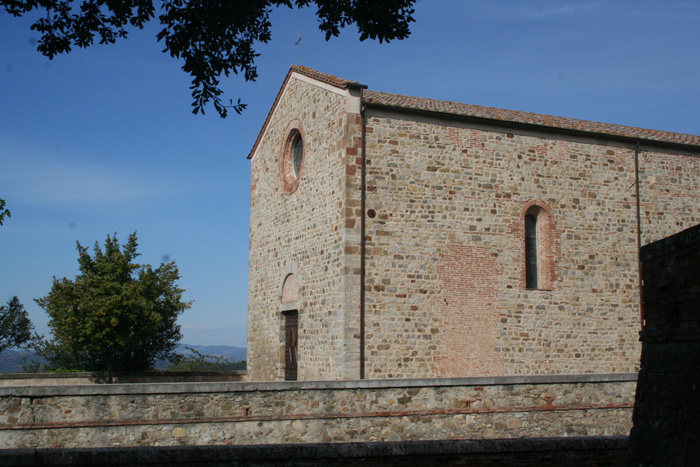 |
||
Campagnatico, Chiesa di Santa Maria della Misericordia |
||
Of special historical and architectural interest is the Pieve di San Giovanni Battista, of Romanic-Gothic style, charcatherized by a vela, a bold bell tower. Inside the Pieve, frescoes of the late the 13th century. The church it is located in the highest part of the town and is the perfect place to enjoy the splendid views of the Maremma.
|
||
| Abbazia di San Bartolomeo a Sestinga (it) Riserva Naturale La Pietra (Map). La Pietra Nature Reserve protects a territory almost entirely covered with woodlands between the stream Farma and the last stretch of the stream Farmulla. |
|
|
The village, inside the imposing walls, is a typical example of medieval fortress, with narrow paving-stone streets, bold arches, loop-hole for the archers, high towers and belfry which overlook red tiled roofs and strongholds. The surroundings of Campagnatico also include other fortresses and castles to visit. The Monte Leoni castle is definitely worth a visit for those who want to have the real feel of the passage of time. Not far from Monte Leoni is the castle of Stertignano, another building that has not stood the toll of time and is now in ruins. Nevertheless, it is worth a visit to realize the building characteristics, such wall thickness and materials used, of the castles of this area. Needdless to say, here one breathes the disgraced history that characterized this castle, that passed through the hands of many important families from 1274 onwards to be abandoned in 1370 and returned to the countryside in 1438 by the state of Siena. The most important castle is Montorsaio, today blossomed into a hamlet of greater proportions than the usual fortress. The location is wonderfully set on a hill covered with woods. Just like the other two castles, Montorsaio belonged to many powerful families, however all under the dominion of Siena, which reinforced the bastion with a newly made keep. After other passages of property the Medici got hold of the castle in the 16th century. The more strategic importance of the castle explains why throughout the centuries it has been maintained, reinforced and preserved, saving it from the ruin like its neighboring fortresses. |
||
Set on a small hill not far from Campagnatico is the village of Montorsaio. Of medieval origin and largely restructured is the parish Church of San Cerbone and San Michele and the Chiesa del Santissimo Crocifisso. The remains of the Castello di Stertignano, which belonged to the Aldobrandeschi family, can be explored at a spot called Marrucheti, a fraction of Campagnatico. |
||
| Campagnatico and its Surrounding Castles [in Google maps] | ||
|
Arcille, Marrucheti and Montorsaio are fractions of Campagnatico. The largest fraction is Montorsaio, appreciable medieval "borgo" (village) that rises on a high hill facing Campagnatico. |
|
View Larger Map |
Food and wine
The cuisine of the Maremma is very much influenced by the juxtaposition of the coastal plain and the hill country that gradually rises up towards Monte Amiata. Near the sea the dishes are similar to those elsewhere on the Tuscan coast - enriched by the fish of the lagoon of Orbetello and the other similar areas of water along the coast - while, in the interior, the mushrooms and game abounding in the woods and macchia reign supreme. Just about everywhere the wild boar, symbol of the Maremma's culinary traditions, is served, as are many dishes of peasant origin: the local people have always had to rely on the countryside for most of their foodstuffs, and this a guarantee of their quality, as today's cooks who have revived the specialities of the traditional cuisine are well aware. |
||||
The development of Paganico, and its passage from little village to walled town, is strictly connected to the beginning of the Sienese domination on this area of the Maremma, started in 1193. The fortified strongold, placed at the confluence between the rivers Ombrone and Lanzo, was constructed along the main road that from Siena, passing through S.Lorenzo a Merse and Forcole, leads to Roselle and Grosseto, giving origin to a real 'terra nuova', a settlement straight in the heart of the new southern territories of Siena. To facilitate the economic growth, Paganico was free of fiscal impositions and taxes, so that at the time was named Castelfranco Paganico. To increase its importance in 1294 the town was made seat of an important market to destabilize the feudal economic system of the zone, controlled by the Ardengheschi family. In order to complete the elevation of its rank, since 1303 Paganico was seat of a vicariate. The damages provoked by the mercenary troops and the nasty air of the Maremma, at that time a malarial swampy region, caused, starting from the mid-13th century, the depopulation of Paganico. In 1494 the town was sacked from the troops of Carl VIII° then it passed under the Medicean control but only with the Grand-Ducal drainages, carried on in the 18th century, the area known an economic and social rebirth. The first walled enclosure of Paganico dates back to 1278 and was destroyed in the 1328 by Castruccio Castracani. Little after, in 1334, were erected the new town walls, under the direction of the architect Lando di Pietro, the same director of the works at the New Cathedral of Siena. These walls have the shape of an irregular quadrilateral, nearly trapezoidal, with squared towers on each curtain, four massive tower at the angles, four gates placed at the extremities of the two main road that crossed the town. Remnants of the machicolations are still partially visible. A tall keep or 'mastio' [called Cassero Senese, transformed in medicean age in a residential palace], flanks of the North gate, also known as 'Porta Senese'. The North and South Gates were equipped of a small barbican, now disappeared. The eastern front of the town walls with its Gate is nowadays totaly lost, together with some part of the northern, but all the other sides still surround the town, even though in some parts damaged. Intact are the 'Porta Grossetana' (or Franca) and the Porta Senese, both endowed with the characteristic pointed arch overlapping a lowered round arch surmounted by the black and white coat of arms of Siena. Partially intact is also the Porta Ovest. Inside the town is geometrically laid out, as all the planned settlements, with some beautiful medieval mansion with porches and, in the main square, the recently restored well and the Romanesque church of S.Michele, erected between 1296 and 1305, with two cycles of frescoes attributed to Biagio di Goro Ghezzi. |
||||
| [1] Source : Toscanamare | www.touringclub.it Montecucco is one of the “new” wine regions in Tuscany, it was acknowledged only in 1998. It includes several varieties of wine: Rosso, Sangiovese, Bianco and Vermentino. Rosso and Sangiovese also feature a Riserva wine. The area includes the municipalities of Arcidosso Campagnatico, Castel del Piano, Cinigiano (the eponymous district of Monte Cucco), Civitella Paganico, Roccalbegna and Seggiano. ASSOCIAZIONE "STRADA DEL VINO COLLI DI MAREMMA Ufficio del Comune di Scansano Piazza del Pretorio, 4 58054 Scansano (Gr). Wine in Tuscany | Montecucco COC |
||||

